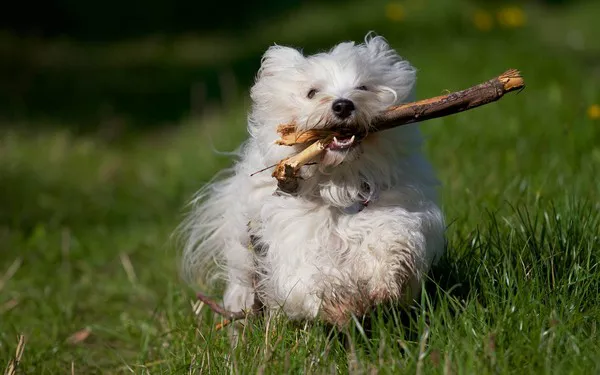Schnauzers are one of the most distinctive and recognizable dog breeds, known for their bushy beards, prominent eyebrows, and lively personalities. This breed comes in three sizes: Miniature, Standard, and Giant. All of these variations share similar traits, such as intelligence, a strong will, and a close bond with their owners. But when it comes to house training, many prospective owners may wonder: Are Schnauzers easy to house train?
In this article, we’ll explore the house-training process for Schnauzers by delving into the breed’s characteristics, behavior, and living habits. By understanding their personality and tendencies, you’ll gain insight into how to effectively train and nurture your Schnauzer.
Breed Characteristics of the Schnauzer
To fully understand how to approach house training a Schnauzer, it’s essential to first understand the breed’s inherent traits. Each Schnauzer type (Miniature, Standard, and Giant) may have slight differences in temperament, but they share a core set of characteristics.
Intelligence and Problem-Solving Ability
One of the hallmarks of the Schnauzer breed is their intelligence. These dogs are incredibly quick learners and have a strong problem-solving ability. Whether it’s figuring out how to open a gate or interpreting commands, Schnauzers are fast thinkers. This cognitive sharpness is a double-edged sword when it comes to house training.
On the positive side, their intelligence means they can quickly understand training cues and pick up new routines. However, their smartness can also lead to stubbornness or attempts to manipulate the rules. If they sense inconsistency in the training process, they may try to “outsmart” their owners.
Independent Yet Loyal
Schnauzers are deeply loyal dogs that develop strong attachments to their human families. Despite their independent streak, they crave companionship and thrive when given attention and care. This loyalty makes them willing to please their owners, which is an advantage during the training process.
However, Schnauzers’ independence means they may not always be immediately obedient. They may take their time to process a command before responding, which can be perceived as stubbornness but is more likely their way of evaluating a situation.
High Energy Levels
Schnauzers, especially the Miniature and Standard varieties, are energetic dogs that need a lot of physical and mental stimulation. Without regular exercise and engagement, they can become bored and act out in undesirable ways. A Schnauzer with pent-up energy may have difficulty focusing during training sessions, and could become mischievous at home.
Giant Schnauzers, while also energetic, tend to be slightly calmer than their smaller counterparts, but they still require significant mental and physical activity to remain well-balanced.
Understanding Schnauzer Behavior for Effective House Training
House training any dog requires an understanding of its behavior and tendencies. For Schnauzers, several factors can affect their ability to be house trained.
Territorial Instincts
Schnauzers are naturally territorial, which can complicate house training if not addressed early. They may mark their territory indoors if they feel threatened or insecure, especially in multi-pet households. Training them to distinguish between acceptable outdoor elimination areas and indoor spaces can be challenging but is essential for housebreaking success.
This territoriality may also lead them to bark at strangers or unfamiliar noises, signaling their sense of ownership over their home. While barking is not directly related to house training, this behavior showcases their awareness of space and can be linked to their need for clear boundaries.
Sensitivity to Routine
Schnauzers thrive on routine. They tend to do well when they know what to expect and when. This predictability helps in house training, as establishing consistent times for meals, potty breaks, and exercise creates a structured environment that supports their learning process.
However, if their routine is disrupted—due to changes in schedule, family dynamics, or environment—they may struggle with house training regression or become anxious, leading to accidents indoors.
Strong Bond with Owners
The strong bond that Schnauzers develop with their human companions can be a great asset during house training. They are highly motivated by praise and positive reinforcement from their owners. Using this bond to your advantage by incorporating plenty of encouragement, treats, and affection during training sessions can significantly speed up the process.
However, if they sense frustration or negativity from their owners, Schnauzers can become confused or resistant to training. Maintaining a positive and patient approach is key.
Are Schnauzers Difficult to House Train?
The short answer is: Schnauzers are neither the easiest nor the most difficult breed to house train. Their intelligence, strong will, and sensitivity to routine make them trainable, but they also come with certain challenges that need to be navigated carefully.
Factors That Make Schnauzers Easy to Train
Quick Learners: Schnauzers’ high intelligence allows them to quickly pick up on commands and routines. With consistent guidance, they can understand house training rules relatively fast.
Eager to Please: Their loyal nature makes them willing to please their owners, which can be leveraged with praise and positive reinforcement during house training.
Good Memory: Schnauzers have excellent memories, meaning once they learn something, they are likely to remember it for the long term. This helps prevent regression after the initial training is complete.
Challenges to House Training Schnauzers
Stubbornness: Schnauzers, especially the larger varieties, can be headstrong. If they don’t feel like following instructions or if they sense inconsistency, they may refuse to cooperate.
Territorial Behavior: Schnauzers’ tendency to mark territory can complicate the house training process, particularly in multi-dog households.
High Energy: Without sufficient exercise and stimulation, Schnauzers can become distracted, making it harder for them to focus on training sessions.
Step-by-Step Guide to House Training a Schnauzer
To ensure successful house training, it’s important to follow a structured and consistent approach. Here’s a step-by-step guide designed to address Schnauzer-specific traits:
Establish a Routine
Schnauzers are highly sensitive to structure, so establishing a predictable routine is crucial for house training success. Set regular times for meals, bathroom breaks, walks, and playtime. Consistency helps reinforce good behavior, and your Schnauzer will quickly learn when to expect potty breaks.
Tip: Take your Schnauzer outside first thing in the morning, after meals, and before bedtime. This will help reduce the chances of accidents inside.
Crate Training as a House Training Tool
Crate training is highly recommended for Schnauzers. Since dogs generally avoid soiling the areas where they sleep, a crate gives them a designated space they will keep clean. This approach also helps Schnauzers feel safe and secure, as crates serve as a “den” for them.
Start by allowing your Schnauzer to spend short, positive periods in the crate, gradually increasing the time as they become more comfortable. Use the crate during times when you’re unable to supervise them, especially when they’re still learning the rules.
Tip: Never use the crate as a form of punishment. It should be a positive space associated with rest and relaxation.
Positive Reinforcement
Schnauzers respond exceptionally well to positive reinforcement. When they successfully eliminate outside, shower them with praise, treats, or affection. This creates an association between good behavior and rewards, making them more likely to repeat the desired action.
Be consistent with your rewards and avoid punishment when accidents occur. Schnauzers are sensitive dogs, and negative reinforcement may confuse them or cause anxiety, making house training more difficult.
Supervision is Key
During the house-training process, it’s essential to keep a close eye on your Schnauzer, especially when they’re inside. This helps you catch any signs that they need to go outside, such as sniffing, circling, or restlessness. Supervision also helps prevent bad habits, like marking territory indoors.
If you notice these behaviors, quickly take your Schnauzer outside to the designated potty area. Over time, they will begin to associate these signals with going outside.
Addressing Accidents Calmly
Accidents happen, especially during the early stages of house training. It’s important not to get frustrated or punish your Schnauzer when these incidents occur. Instead, calmly clean up the mess using an enzymatic cleaner that removes odors and prevents repeat accidents.
Punishment after an accident can confuse your Schnauzer, making them fearful or anxious about house training. Instead, focus on prevention by maintaining a consistent routine and monitoring your dog closely.
Handling Territorial Marking
If your Schnauzer is marking territory inside, it’s important to address the behavior early. Neutering or spaying can reduce marking behavior in many dogs, but it may still require additional training. Limit your Schnauzer’s access to areas where marking has occurred and closely supervise their behavior indoors.
Reward your Schnauzer when they mark appropriately outdoors, and if necessary, consider professional training for more stubborn cases of territorial marking.
Special Considerations for Different Schnauzer Sizes
Though all Schnauzers share many common traits, the size of your Schnauzer can influence the house-training process.
Miniature Schnauzers
Miniature Schnauzers are highly energetic, and their smaller size means they may need more frequent bathroom breaks, especially during puppyhood. They are quick learners but can be more prone to separation anxiety, which may complicate house training. Miniature Schnauzers are often easier to crate train due to their size and tendency to seek comfort in enclosed spaces.
See Also: Are Schnauzers Good Apartment Dogs?
Standard Schnauzers
Standard Schnauzers are active and intelligent, often exhibiting a stronger independent streak compared to Miniatures. Their larger size means they have more bladder control, but their stubbornness may present a challenge during training. As with Miniature Schnauzers, Standard Schnauzers benefit from a structured routine and positive reinforcement.
Giant Schnauzers
Giant Schnauzers, the largest of the breed, can be more challenging to house train due to their size and strength. They require ample space and exercise, which may make potty training in an apartment setting more difficult. However, their loyalty and intelligence mean they are trainable with patience and consistency.
Troubleshooting Common Issues During House Training
Even with the best efforts, some issues may arise during house training. Here are some common problems and solutions:
Regression
It’s not uncommon for Schnauzers to experience house-training regression, especially after a change in environment or routine. If this happens, return to the basics: re-establish the routine, increase supervision, and use the crate if necessary.
Nighttime Accidents
If your Schnauzer is having accidents during the night, consider adjusting their feeding schedule to ensure they’re not eating or drinking too close to bedtime. Make sure they go outside right before bed and crate them overnight if needed.
Persistent Marking
If your Schnauzer continues to mark indoors despite training efforts, consult a professional trainer or behaviorist. In some cases, marking may be a sign of insecurity, and addressing the underlying emotional issue can help resolve the behavior.
Conclusion
Schnauzers, with their intelligence, loyalty, and distinct personalities, are highly trainable dogs, but house training requires patience, consistency, and a clear understanding of their behavior. While they may exhibit some challenges, such as territoriality or stubbornness, their eagerness to please and quick learning ability make them excellent candidates for successful house training.
By creating a structured routine, using positive reinforcement, and addressing any issues with care, you’ll be well on your way to having a well-trained and well-behaved Schnauzer in your home. Ultimately, the key to house training success with this breed lies in understanding their unique characteristics and building a strong, trusting bond with your dog.
Related Topics:






















